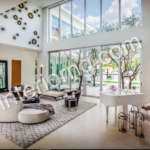Interior design procurement is a necessary component of any effective interior design project. Procurement describes the process of acquiring the materials, furnishings, and accoutrements required to complete a design project. Simply stated, procurement is the act of purchasing goods.
It necessitates a thorough understanding of style as well as a working knowledge of the suppliers, producers, and vendors in the market. The procurement process entails many stages and necessitates organization, attention to detail. And effective communication in order to guarantee that the project is completed on time, within budget, and to the client’s satisfaction.
SEE ALSO: Interior Designers Nassau County, NY: Top 5 Best Interior Decorators in Nassau County, NY
Steps in Procurement Process
The first step in the procurement process for interior design is to locate the supplies and furnishings required for the project. This requires reviewing the design plan and creating an exhaustive list.
Once the list is complete, the next step is to track down the vendors, suppliers, and manufacturers who can provide the required goods. This entails studying the market and contacting potential suppliers to find out about costs, lead times, and availability.
Dealing with trustworthy manufacturers and suppliers is essential since they have a track record of delivering high-quality products on time. This ensures the timely completion of the project and the use of products that suit the needs of the client.
Also, the procurement process includes negotiations with suppliers and vendors regarding prices and contracts. This requires reviewing proposals and contracts, as well as negotiating terms and conditions, to make sure the client gets the best value for their money.
It’s crucial to maintain organization throughout the procurement process and keep track of all orders, invoices, and delivery dates. This guarantees that the project stays on schedule and that all necessary components are supplied on time and within the allotted spending limit.
SEE ALSO: Different Interior Design Style: 12 Popular Interior Design Styles
Interior Design Acquisition
Organizing the logistics of delivery and installation is one of the major difficulties in the purchase of interior design. This entails working with vendors and suppliers to schedule deliveries of goods at the appropriate times and that installation is completed smoothly and efficiently.
To make sure that everything comes together without a hitch, it might occasionally be essential to coordinate with numerous suppliers and vendors. To make sure that every component of the undertaking fits together flawlessly, effective communication and coordination are required.
A crucial component of hiring interior designers is communication. It’s critical to keep lines of communication open with vendors and suppliers in order to guarantee that any problems or delays are quickly resolved. This aids in avoiding any unpleasant shocks or unforeseen expenses that can derail a project.
Sustainability is a key factor in the purchase of interior design. When choosing suppliers and products, keep in mind that many customers are searching for environmentally favorable and sustainable materials and goods.
This entails looking up suppliers and producers who provide eco-friendly and sustainable choices and making sure the project’s products adhere to the client’s sustainability objectives.
The acquisition of interior design is, therefore, a challenging and intricate process that demands a thorough understanding of the industry. There are many steps involved, such as selecting the required materials and furnishings, negotiating contracts, planning delivery and installation, and making sure the project remains on schedule and within the allocated budget.
Important Factors/Aspects of Procurement
- Budgeting: Budgeting is among the most crucial factors in the purchase of interior design. In order to create a realistic project budget, designers must collaborate closely with their customers. They must then ensure that all procurement choices are made with this budget in mind. Finding cost-effective solutions takes careful cost analysis, wrangling with suppliers, and occasionally inventive problem-solving.
- Quality Control:Controlling the quality of the products and materials used in the endeavor is another aspect of the procurement process. To ensure that all materials and products fulfill the necessary standards, designers must collaborate with suppliers and manufacturers who offer high-quality goods. They must also inspect all materials and products before they are installed.
- Project management: The procurement of interior design is frequently a step in a broader project management procedure. To make sure that procurement choices are coordinated with other project elements and that everything comes together as intended, designers must collaborate with contractors, architects, and other experts.
- Lead times: Managing lead times for various materials and goods is another aspect of procurement. While some products might have lengthy lead times and need to be ordered months in preparation, others might be readily available. To make sure that everything is available when it is required, designers must carefully manage these lead times.
- Customization: To meet the unique requirements of the project, designers may occasionally need to purchase materials or products specifically for them. Working with specialized suppliers or manufacturers may be necessary, and careful planning is needed to guarantee that the custom items are supplied on schedule and adhere to the necessary requirements.
- Documentation: All orders, deliveries, and repairs must be documented as part of the procurement process. This documentation is crucial for managing expenses, tracking progress, and settling any potential conflicts.
Effective preparation, communication, and attention to detail are essential for the procurement of interior design. By collaborating with trustworthy suppliers and manufacturers and remaining concentrated on the needs and objectives of the customer, designers can produce beautiful and useful spaces that adhere to the highest standards of quality and sustainability.
SEE ALSO: Minimalist Interior Design: Everything you Need to know About Minimalist Interior Design





Always looking forward to your next article